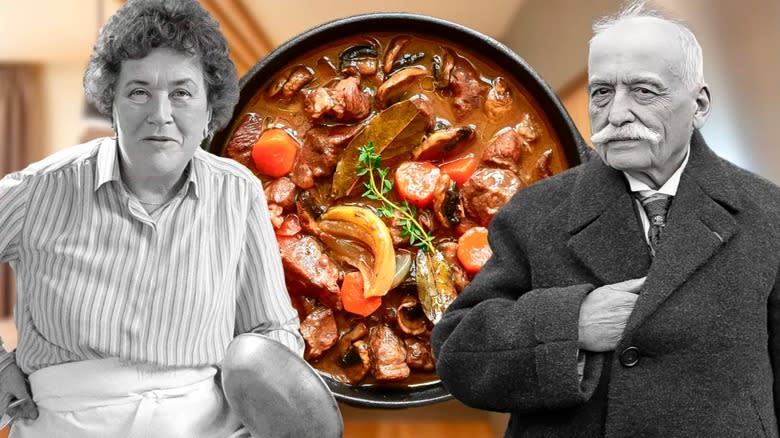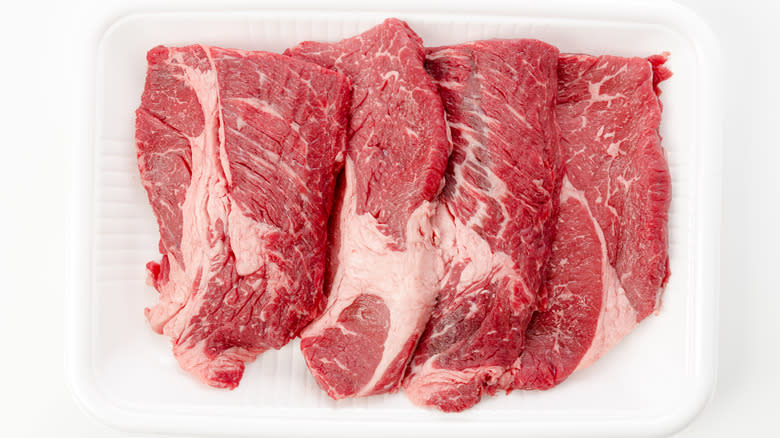How Auguste Escoffier's Beef Bourguignon Differed From Julia Child's

- Oops!Something went wrong.Please try again later.
At the heart of the beef bourguignon legacy, two culinary giants, Auguste Escoffier and Julia Child, stand as flag bearers for contrasting approaches to this quintessential French stew of beef, red wine, mushrooms, bacon, and onions. Escoffier, a pioneer of classical French cuisine, adhered to a more traditional methodology, advocating for the use of a whole cut of beef. Julia Child, on the other hand, embraced practicality and accessibility, opting for the more modern and popular choice of cubed chunks of beef.
Escoffier's beef bourguignon recipe represents a meticulous and time-honored approach. He insisted on using an elegant whole piece of beef — albeit one larded with brandy marinated pork fat — emphasizing the importance of preserving the integrity of the meat during the slow-cooking process. The chef showcased a reverence for and desire to elevate this classic peasant dish with a method that allowed the flavors to gradually infuse into the meat, resulting in a dish of depth, richness, and spectacle.
In contrast, Julia Child, with her respectful, but pragmatic approach to French cookery, took a nod from Parisian bistros by making her beef bourguignon with cubed chunks of stewing beef. This twist not only reduced the cooking time but also simplified the preparation, encouraging a wider audience to try their hand at creating a flavorful and satisfying stew.
Read more: 8 Absolute Best Cuts Of Meat To Deep Fry
Aim For A Marbled Cut

As with any dish, the selection of the right cut of beef is a crucial factor. Regardless of their differing styles, both Escoffier and Child understood the importance of cuts with the ideal balance of fat and connective tissue for the slow braising required in this dish. The gentle heat of the braise gradually breaks down the meat until it is achingly tender and the surrounding sauce is almost equally as unctuous.
Favored cuts include those seen in countless other recipes for braised beef and stew, such as chuck, short rib, and brisket. These cuts, with their well-distributed marbling, contribute much to the richness and tenderness of the final dish. Further, these elements enrobe and protect the meat in these various cuts through the long cooking process, which can otherwise become tough and dry. The emphasis is on ensuring a balance of fat and connective tissue that results in a luscious, melt-in-your-mouth texture.
When it comes to cubed versus whole cuts for beef bourguignon, the choice is yours. Cubed pieces do indeed cook and marinate faster, but a whole piece of beef has a certain show-stopping effect when presented. Luckily, the three cuts mentioned above are all readily available as whole cuts at relatively affordable prices. They can also easily be cubed at home as they have no (or few) bones that need to be removed.
Read the original article on Tasting Table.

